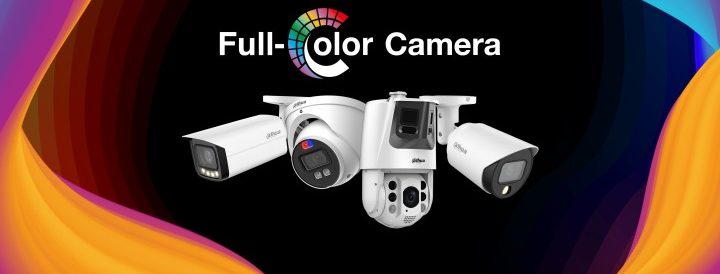See more with Dahua’s Full-color technology Leave a comment
Insufficient light has been one of the major challenges of every monitoring system. Images taken under such lighting conditions are often not clear, have detail loss, and even contain noise, making it difficult to detect or trace back targets in case of an event.
Over the years, improvements in low-light technologies have significantly progressed, leading to a new era of digital cameras that can perform well under low-light environments. In fact, according to the report by International Data Corporation (IDC), sales for network cameras without low-light technology are expected to drop significantly over the next few years due to the increased adoption of cameras with low-light sensitivity.
However, traditional low-light cameras that claim to capture clear colour images even at night often come with a heap of hitches, including light pollution due to excessive use of supplementary white light and low resolution.
Also, specifying a security camera for environments under low-light conditions isn’t a one-size-fits-all solution. Specifications alone do not define the best network camera when it comes to low-light performance. One optimized solution might not be the best fit for other application scenarios. Therefore, the camera should be able to intelligently adapt to various types of scenarios to provide round-the-clock monitoring.
The Dahua Full-color cameras were developed to address these demanding monitoring challenges. Introduced in 2020, the Dahua Full-color technology has evolved from Starlight technology, Full-color, to Full-color 2.0 and the future Full-color. With remarkable offerings such as dual lens, varifocal lens, 4K resolution, and AI features, this technology offers a wide range of products and solutions that can effectively solve the arduous monitoring pain points of end-users and provide clear and vivid images of the monitored scene 24/7.
Moreover, the Dahua Full-color is more than just a low-light environment technology. It offers a great deal of specs that allow it to adapt to different types of scenarios. To give you more insights into this amazing technology, here are some cool features that make Dahua Full-color extra special:
Large aperture
The aperture is used to control the amount of light that passes through the lens and into the body of the photosensitive surface of the camera. The Dahua Full-color cameras adopt an F1.0 super large aperture lens that collects 2.5 times more light than the typical F1.6 aperture lens. As it receives more light, the brighter the image output it creates.
High-performance sensor
The sensor used in a camera plays a pivotal role. The lighter each pixel of a sensor receives, the better the response and sensitivity. In a nutshell: the bigger the pixel, the better the low-light performance of the camera is.
The current Full-color 2.0 cameras are primarily equipped with a 1/1.8’’ image sensor that offers 30% more photosensitivity than traditional sensors in the market. Moreover, the Full-color 4K IPCs even have 1/1.2” super large sensors that provide a 110%-pixel size increase compared with the 1/1.8” image sensor.
Warm light
As advancement in modern devices develops at a rapid pace, potential effects of the blue light content within display devices and lighting have become a subject of particular interest and concern. Various laws and regulations regarding this matter were established to promote safe lighting and avoid ‘blue light hazard’.
Instead of the conventional white light, the Dahua Full-color cameras use warm light with blue light weighted radiance of 40%. This means that the supplementary warm light has a lesser effect on the human eyes, and relatively helps reduce light pollution in the monitored area.
AI-based advanced image processing
Dahua Full-color utilizes AI-based Image Signal Processing (ISP) to improve its image output in terms of noise, colour and sharpness. The capability of Full-color technology to capture colour details in time and space comes from its powerful hardware, advanced image processing algorithms, and integration with other intelligent functions, leading to a “1+1=∞” breakthrough of infinite possibilities.


